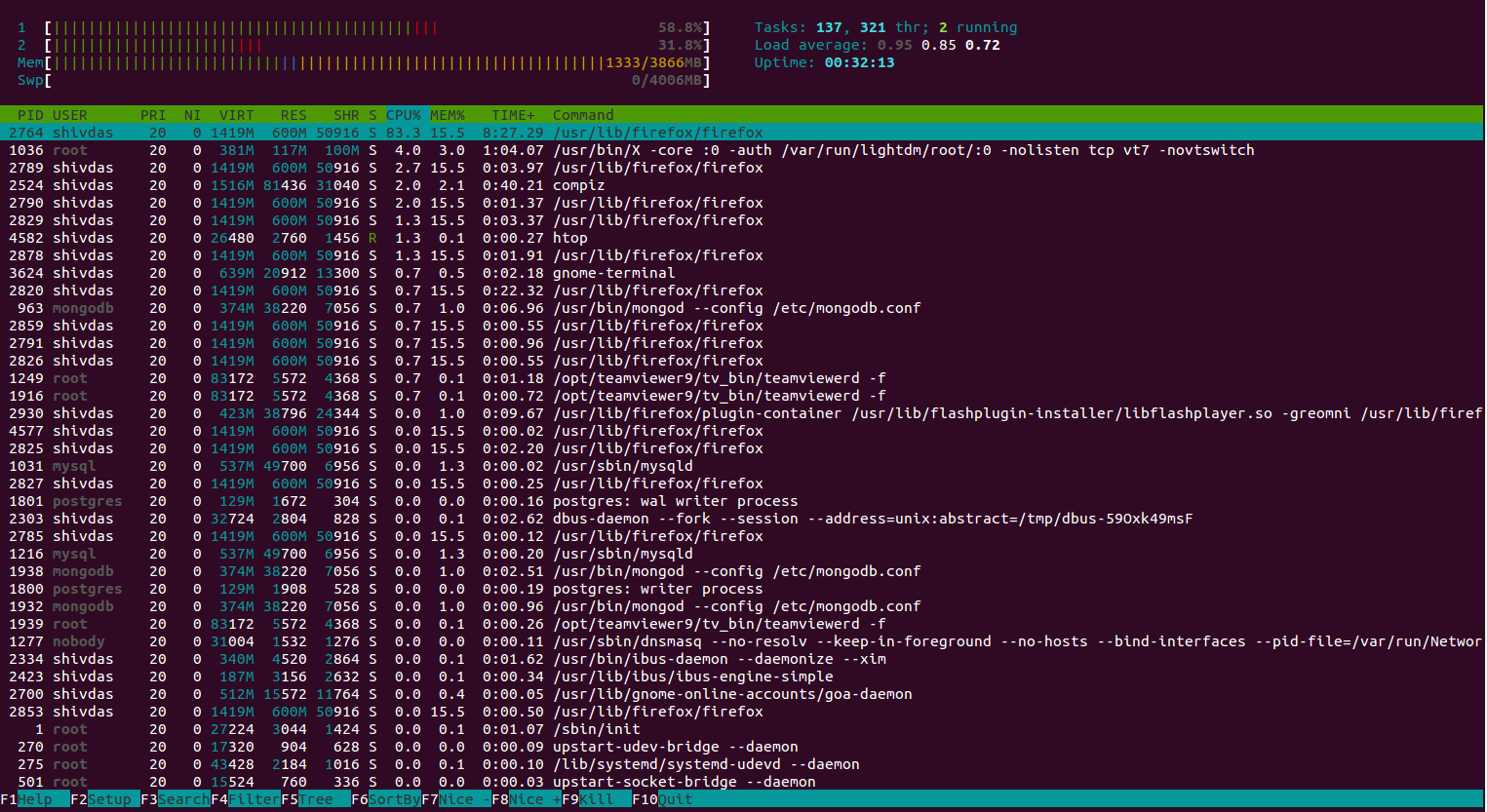
The data is continuously updated, which allows you to follow the processes in real-time. The top command is useful to check memory and CPU usage per process. st: Time stolen from a virtual machine.Before Linux 2.5.41, this includes IO-wait time. us: Time spent running non-kernel code.CPU – These are percentages of total CPU time.cs: number of context switches per second.So looking at the outputs above, we can see that the system has used zero. Some people may see the output of free, or the above graph, and react with 1G on my 48G system is all.
#Linux memory monitor free
in: number of interrupts per second, including the clock. The Right Way to Monitor Virtual Memory on Linux Assessing Linux Memory Usage. Memory Monitoring swpd - Amount of virtual memory used free - Amount of free memory buff - Amount of memory used as buffers cache - Amount of memory used. To view the top process (by utilization), you can. bo: Blocks sent to a block device (blocks/s). Interactive command-line monitoring tool for CPU, memory, disks, network, NFS, and virtual memory utilization. bi: Blocks received from a block device (blocks/s). buff: the amount of memory used as buffers. b: number of processes in uninterruptible sleep. r: number of processes waiting for run time. The detailed description listed below provides an explanation for each value in case you need assistance in analyzing the results. The table below lists the most useful variations of the free command. The free command has multiple options to format the output so that it better matches your requirements. These files will only tell you how much memory. To get the memory usage of a single process we can grep the process from the list./smem -k sed -e '1p' -e '/amsHelper/d' grep -v sed PID User Command Swap USS PSS RSS 31768 root /sbin/amsHelper -f 0 56.0M 56.4M 58.7M. You can look at /proc/pid/maps or /proc/pid/smaps (maybe). This will give you memory usage detail of every process active on your system. The problem is not working out how much memory it's using, but how much of that is private and how much shared. The key figure being the available value as it displays how much memory is still available for running new applications. It is really difficult to work out how much memory a process is using on an operating system which supports virtual memory. Memory reserved by the OS to allocate as buffers when process need themĮstimation of how much memory is available for starting new applications, without swapping.Ĭompared to the /proc/meminfo file, the free command provides less information. 
Unused memory (free= total – used – buff/cache) This SAM application monitor template assesses the memory performance of a of Linux servers through the use of Perl scripts. (free -m will show you memory used/available in megabytes) As others have suggested. Memory currently in use by running processes (used= total – free – buff/cache) Well, the most basic way to show memory usage is the free command. The data represents the used/available memory and the swap memory figures in kilobytes.





 0 kommentar(er)
0 kommentar(er)
